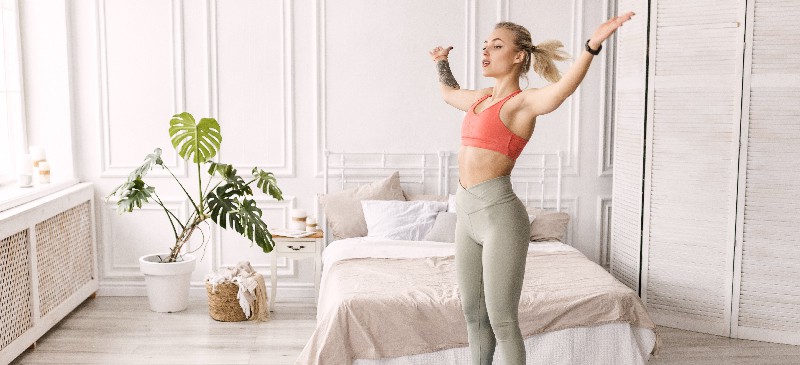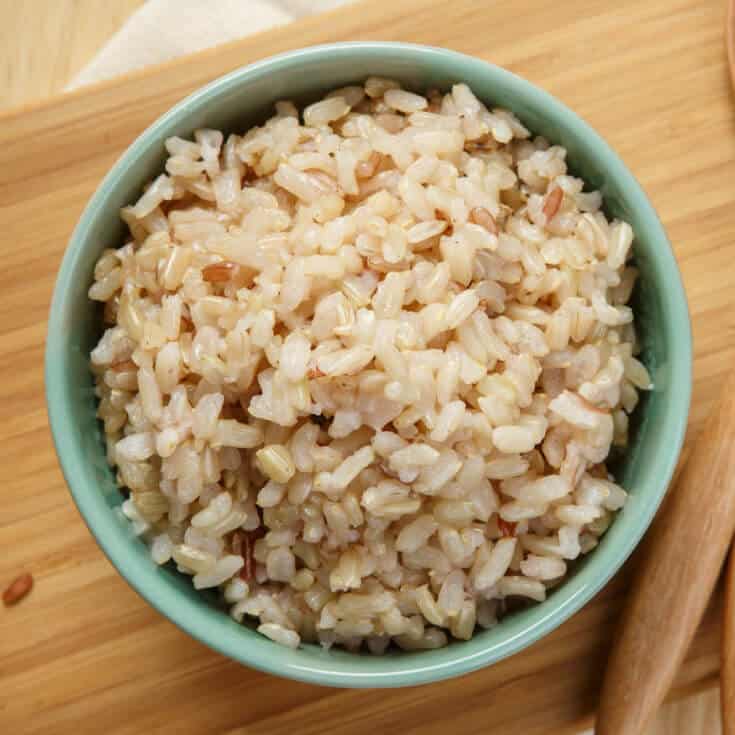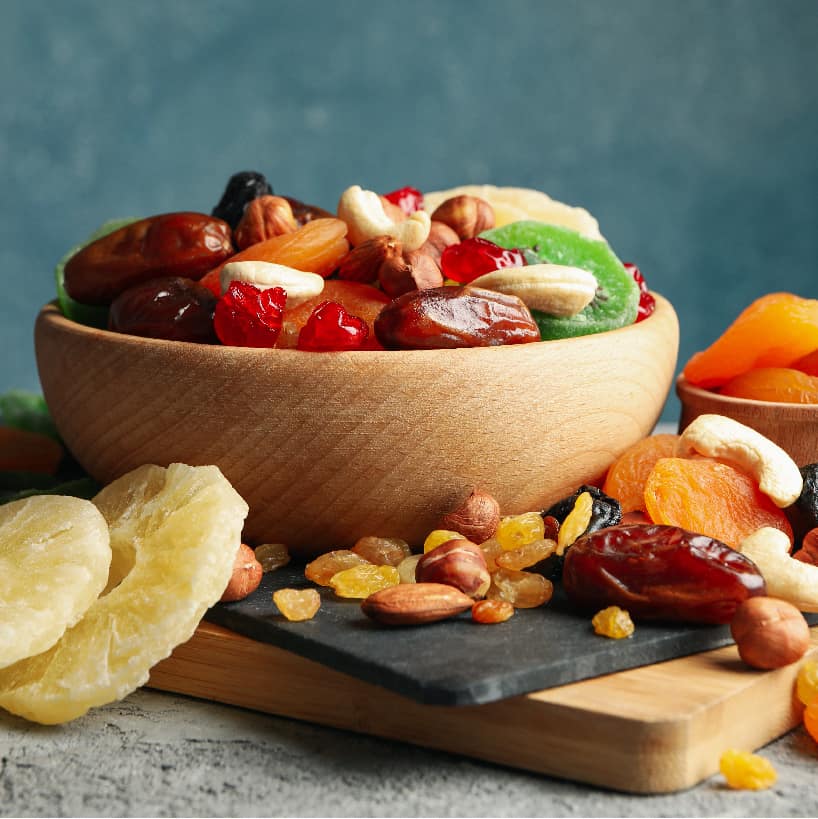This Dr. Axe content is medically reviewed or fact checked to ensure factually accurate information.
With strict editorial sourcing guidelines, we only link to academic research institutions, reputable media sites and, when research is available, medically peer-reviewed studies. Note that the numbers in parentheses (1, 2, etc.) are clickable links to these studies.
The information in our articles is NOT intended to replace a one-on-one relationship with a qualified health care professional and is not intended as medical advice.
This article is based on scientific evidence, written by experts and fact checked by our trained editorial staff. Note that the numbers in parentheses (1, 2, etc.) are clickable links to medically peer-reviewed studies.
Our team includes licensed nutritionists and dietitians, certified health education specialists, as well as certified strength and conditioning specialists, personal trainers and corrective exercise specialists. Our team aims to be not only thorough with its research, but also objective and unbiased.
The information in our articles is NOT intended to replace a one-on-one relationship with a qualified health care professional and is not intended as medical advice.
Calisthenics Workout Exercises for Improved Muscle Tone
October 6, 2024

When thinking of calisthenics, if you have a mental picture of military members performing jumping jacks to cadence, you’re not far off. The truth is, though, that calisthenics exercises are rooted much deeper in history, dating all the way back to ancient Greece.
When it comes to your personal history, you probably first experienced calisthenics workouts in elementary school gym class in the form of sit-ups, push-ups, jumping jacks and other bodyweight exercises.
Calisthenics, when performed vigorously, actually help people gain muscle and serves as an aerobic form of exercise at the same time. Talk about a timesaver.
Speaking of that, with people’s time-crunched schedules, fitness programs seem to be largely focused on how to get the benefits of exercise in the least amount of time. (That’s right, one-minute workouts are a thing.)
Packing a lot of exercise, including lots of bodyweight training, into a short amount of time has become quite popular, as evident with CrossFit and Tabata workouts.
These workouts all feature calisthenics to some degree. Now learn about the classic calisthenics workout and exercises.
What Is a Calisthenics Workout?
Simply put, the calisthenics definition is using your bodyweight and gravity to perform exercises (some of which are pretty intense) using good form.
What’s great is that it does not require a gym membership and could include various activities, such as plyometric exercises, gymnastics, Pilates, running, squats, lunges for great legs, crunches, jumping and walking, just to name a few calisthenics workout ideas.
A more common term for calisthenics today is bodyweight training. Regardless of what you call it, this type of training can be the core of a fitness plan or used in conjunction with other training programs, including cardio workouts, HIIT workouts, marathon or triathlon training, weight training, and even yoga.
Mixing it up is a great way to ensure that you are working all of your muscles and can provide a healthier path to fitness.
Calisthenics has been around for a very long time, originating from the ancient Greek words kálos, which means “beauty,” and sthénos, meaning “strength.” It is defined as the use of bodyweight and “qualities of inertia” to help develop the physique.
It may have been named after the Greek historian, Callisthenes, who was tutored by Alexander the Great.
Best Calisthenics Exercises
There are many types of calisthenics exercises, with push-ups and pull-ups the most common.
1. Push-ups
Push-ups are a favorite calisthenics exercises because they build strength in numerous areas of the body and can be done anywhere. You can achieve great muscle development, as it’s one of the great chest exercises, without lifting a single weight.
Performing push-ups, for instance, strengthens the muscles in your chest, shoulders and triceps while also strengthening your core. You can add variety by doing push-ups on a medicine ball or adding a clap between each one.
An advanced version is the Spiderman push-up, which works the obliques by bringing the knee up toward the arm as you lower into the push-up. (Check out a push-up in a TRX workout.)
2. Pull-ups
Pull-ups are great for working your back and biceps. In fact, it’s one of the best exercises for your latissimus dorsi.
The most popular style is with the palms facing forward. However, the chin-up, with your palms facing toward you, is a great challenge, too.
While you can do these using a pull-up bar at the gym, you can also perform them with a sturdy tree branch or find a bar at a nearby park. There are some options available for installation in doorways of your home, as well.
Can’t do a pull-up with your own bodyweight? Many cannot, so instead use a chair at home to give an assist.
At the gym, use a lat pulldown machine or a pull-up machine that gives assistance.
3. Abdominal exercises
Ab exercises are calisthenics exercises as well.
There are various ab exercises that you can do to contract the muscles and work toward strengthening them. Even the push-ups mentioned above can help do this if you focus on contracting the muscles while performing the push-up.
There are lots of exercises that are amazing for the abdominal area, such as the plank, crunches and hip raises — all of which can be done with your bodyweight, making these types of exercises great for a calisthenics workout on their own or incorporated into your overall fitness routine.
4. Jumping jacks
Jumping jacks are great because they get the heart pumping — not only offering fat-burning benefits, but keeping the heart healthy. The full body movement combined with jumping gives the body a great overall cardio burn, and jumping jacks also serve as a great leg exercise.
If you are not able to jump at this time or need to work up to it, you can do a low-impact version by extending one leg at time as the arms go overhead in the traditional jumping jack form.
Squat and jumping movements are also great butt exercises, and they can be part of an overall butt workout.
Benefits
1. You can do calisthenics anywhere
Because calisthenics can be done using only your bodyweight, this type of training can be performed anywhere. You can do an entire routine in the privacy of your home, at the gym or in a nearby park.
I’ve even done short workouts at the airport.
There are numerous ways to perform calisthenics exercises at different levels.
For example, a push-up can be performed on the knees for beginners. Over time, you can work up to the toes and eventually add in claps or side knee tucks.
The options are many and will build muscle and stamina.
2. Calisthenics can help provide improved coordination
The Journal of Sports Rehabilitation published a study investigating how Pilates and calisthenics impact a person’s coordination. The participants included healthy females ages 25 to 50.
The results indicated that calisthenic exercises were more likely to improve coordination after three and six months of training compared to Pilates. Pilates is great, but if you’re looking to increase coordination, you may benefit more from calisthenics-type exercises.
3. You gain all-over muscle tone
Calisthenics offer the ability to build amazing muscle tone, and you can pretty much take it as far as you want. Using your own bodyweight can allow you to focus on specific muscle groups and overall body tone at the same time.
Typically, when lifting your own bodyweight, it requires focus and engagement of many more muscles to ensure proper form. That means that all of these muscles are getting work that will result in a more evenly distributed physique (rather than an overbuilt one).
4. Provides support for other sports and fitness goals
Calisthenics-type exercises are a safe choice because they put less strain on the muscles and joints of the body. This is considered a “natural” form of training because you are using your own bodyweight to perform the exercises.
This is not an injury-free guarantee, but with proper form and gradual increase in intensity, this type of exercise can definitely provide a safer option for an effective workout.
Calisthenics workouts are perfect for adding strength without adding bulk. This is often needed to become more efficient at other sports as well as helping to prevent injury.
Endurance runners often need to strengthen the hips in order to be more efficient at running while minimizing the risk of injury.
A study tested athletes by increasing their strength training but decreasing their overall volume of training. The group that increased their strength training resulted in improved performance through improved muscle development.
Another study found that “explosive strength training” improved results by improving endurance due to improved neuromuscular efficiency. This occurs when the nervous system uses the correct muscles to produce or reduce force while stabilizing the body in all three planes of motion.
5. It’s perfect for beginners to advanced exercisers
Calisthenics is perfect for anyone just starting a physical fitness plan or someone who is advanced but wants a more shredded physique.
By starting slowly, a beginner can begin a smart program that will provide amazing benefits, especially if consistent.
However, make sure to choose a program that offers modifications so you can have options that are right for you and at your level. Starting at a too advanced level puts you at an increased risk of injury.
In terms of frequency, two to four days per week for about 20 minutes each session is a good place to start. Over time, you can work more exercises and longer time periods into your training schedule.
An advanced exerciser can develop amazing overall body tone, muscle development and strength by performing more intense variations of calisthenics.
6. It’s an option even if you have health issues
Calisthenics isn’t just for people who are already in shape. If you’re living with chronic disease, check with your doctor to see if it’s right for you.
In 2016, Turkish researchers published a study showing that calisthenics is as safe and effective as cycling for people living with chronic obstructive pulmonary disease.
Full-Body Calisthenics Workout
If you are looking to get great muscle tone, consider a calisthenics workout a few times a week. If you want to get results, create a routine that you can commit to doing and stay consistent.
Here is a great workout to put into your routine.
Warm-up
Repeat sequence 2 to 3 times:
- Jog in place for 1 minute — Modification: March in place
- Jumping jacks x 20 — Low-impact option: Leave out the jump, stepping one foot out to the side each time the arms go overhead
- Push-ups x 10 — Place your hands on the floor with your legs extended and toes on the floor. Hands should be wider than shoulder width to work the chest. While engaging the abdominals, lower down into a push-up, then return to start. Repeat. (Modification: Place your knees on a mat on the floor, then lower and lift back to start.)
- Shallow squats x 10 — With feet hip-distance apart, lower halfway down into a squat, sticking the butt back behind you as if sitting in a chair, then raise back up while engaging the glutes. We are just warming up, so a half-squat works for this exercise.
Main workout
- Repeat 2 to 3 times
- Take a 15-second rest between each exercise
1. Pull-Ups
Do as many as you can.
If you have access to a pull-up bar, try this. If you are not ready for the pull-up, start by doing what is called an iso-eccentric pull-up.
To do this, grab onto a bar, and jump up so your chest touches it. Try to hold that position for three to five seconds.
Then lower yourself slowly and with control.
2. Deep Squats x 25
With feet hip-distance apart, lower down into a deep squat, sticking the butt back behind you as if sitting in a chair, then raise back up while engaging the glutes.
Keep the chest upright. As you get stronger, hold the squat for 5–10 seconds before raising back up.
3. Crunches x 20 (center, left and right for a total of 60)
Lie face up on a mat on the floor. Place your hands behind your head, but do not use them for support. Keep elbows wide.
With knees bent, keep feet close to your butt and crunch up, looking up toward the sky while squeezing the abdominals. Slowly lower back down.
Crunch up again, but this time, twist toward your left knee. Slowly lower.
Crunch up again, but twist to the right knee, and lower. That’s one rep.
Repeat 20 times.
4. Push-Ups x 20
Place hands on the floor, legs extended with toes on the floor. Arms should be wide with hands on the floor.
While engaging the abdominals, lower down into a push-up, and hold for 3–5 seconds, then return to start. Repeat.
Modification: Place your knees on a mat on the floor, then lower and lift back to start.
5. Lunges x 15 (per leg)
Place your feet in a split stance with the right foot forward and the left foot way back with hips facing forward. Lower into a deep lunge, tucking the hips and keeping the weight on the right heel.
Push up through the right foot. Repeat 15 times, then perform the exercise on the other leg.
6. Plank: One minute (work up to 2 minutes)
In push-up position, arms extended, with the neck and head aligned with the spine all the way down through heels, squeeze the abs and glutes. Hold for one minute, while the hips are slightly tucked to help maintain a alignment with the body.
Modification: Place your knees on the mat, and work up to performing the exercise on your toes. You can advance this exercise by raising your right arm and left leg at the same time.
Hold for 10 seconds, and repeat on the other side.
7. Cardio for 10 Minutes
Choose the cardio that works for you based on what is available and what you like to do. For example, you can run for 10 minutes or do 10 30-second sprints, then take a 1- to 2-minute break and repeat your next set.

Precautions
Like all new exercises programs, please check with your healthcare professional prior to performing these exercises. Start slowly, and work your way into more advanced moves over time.
If anything causes unusual discomfort or injury, or if you feel dizzy or dehydrated, stop immediately and consult your healthcare professional.
Final Thoughts
- Calisthenics is an amazing way to start your fitness journey (or to dive deeper into the path you’re already on). What’s great is you can take it with you wherever you go, even when traveling.
- Consider preparing a notebook of workouts you like, or check out some of the great workout apps available today.
- Make fitness a priority in your life and results will follow, especially when combined with a healthy eating plan.














